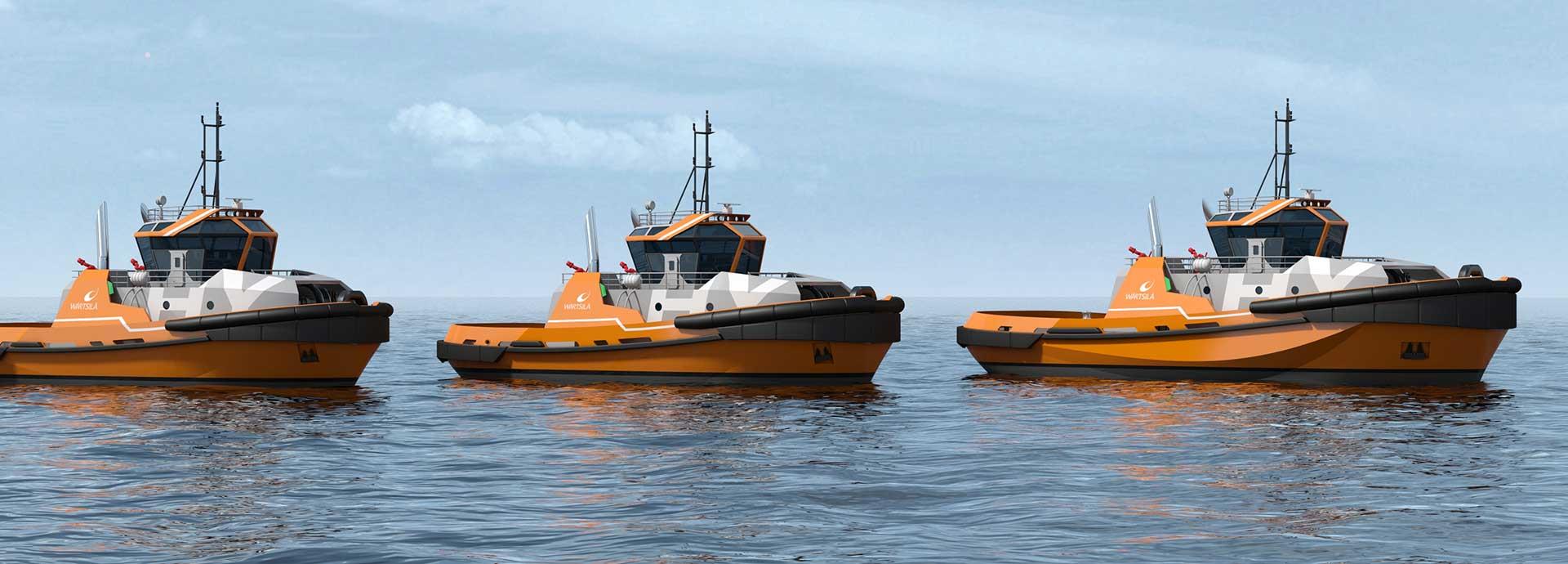

Wärtsilä’s new family of environment-friendly tugs is here! It is based on the Wärtsilä HY concept, and draws inspiration from the company’s proven LNG technology. We tell you how these innovative tug designs translate into improved efficiency.
“Wärtsilä’s journey to provide environment-friendly tug designs started in 2014 when the liquefied natural gas (LNG) Eco Tug was introduced,” remembers Joost Van Eijnatten, Manager Application Engineering, Propulsion, Wärtsilä Marine Solutions.
Tugs with LNG as fuel or with hybrid technology place higher demands on the design and on the integration of the different systems on board and this, he says, is typically where Wärtsilä can excel and add more value.
Interestingly, Wärtsilä has successfully delivered many proven dual-fuel and hybrid solutions for different vessel types and the new eco-friendly tugs are an extension of this endeavour.
“With Wärtsilä’s reputation in Asia as a formidable tug designer, the family of new eco-friendly HY Tugs drive in as a perfect vehicle to further strengthen our position in the market,” says Ay Hwa Ngoh, Offshore & Specials Sales Manager in Wärtsilä’s Ship Design.
These newly launched Wärtsilä HY Tug designs come in three different hull sizes, namely a 28m harbour tug with a 50t bollard pull, a 29.5m harbour tug and a 35m escort tug – both with a 75t bollard pull. The propulsion configuration is such that each design comes with the option to select either diesel mechanical hybrid, or diesel electric hybrid propulsion, and the designs are able to cover a 40 to 90t bollard pull range with the appropriate Wärtsilä equipment modules.
A ‘battery’ of better solutions
Ngoh considers development of battery power as one of the fastest evolving technologies for energy storage that has a huge leg-up on safety, size, and cost.
“Wärtsilä’s constant technological development on engines, E&A, and thrusters also provides further improvement to system efficiency,” says Ngoh adding that the new designs also bring flexibility and efficiency by using less engine power that decreases emissions, fuel bills, and the need for massive engine maintenance.
The company has found a perfect partner in its own thrusters. The Wärtsilä Steerable Thrusters (WSTs), have a large diameter propeller to provide high performance propulsion with excellent hydrodynamics.
“They are reliable and easy to install, operate and maintain,” points out Van Eijnatten adding that the efficiency and low operational costs enabled by WST thrusters, enhances environmental friendliness and overall economics of the new tugs.
And the new tugs have done well to find their place in the new scheme of things.
For starters, they have significantly reduced fuel consumption and associated CO2 emissions as well as NOx, SOx and particle emissions. For the tug designs having LNG as fuel, the emissions are even lower. The Wärtsilä HY Tug features a zero smoke design, meaning that no smoke is visible when the engines are started or running. When running fully electric on the batteries, there are no emissions at all. This zero emission mode is especially useful when starting or idling at port or during transit and standby modes.
What’s more, the thrusters are equipped with seal monitoring, to monitor possible lubrication oil leakage to the seawater.
“While environmentally acceptable lubricant (EAL) can be used for lubrication of the thruster gears, bearings and seals, in the unlikely event of a spill, the oil does not harm the environment even in the case of a leakage,” assures Joost.
Operational performance
Operationally, the new tugs are not only modern and environment-friendly, but also optimised to provide the best performance.
Ngoh points out the practicability of the new tugs which is due to its distinct design that is optimised for low hull resistance, high escort performance, good sea-keeping, safety and comfort for the crew. Some of the new features includes the special wheelhouse design with improved 360-degree visibility for single-man operation, and introduction of side shoulders and semi enclosure for the bow winch for safety of the crew during towing operation. The designs also come with a unique and modern exterior outlook.
“The Wärtsilä HY Tug designs have been designed in close co-operation with the ABS, BV, and Lloyds Register classification societies, and received Approval-in-Principle (AiP) certification,” says Ngoh.
As the total solutions provider, Wärtsilä has the unique vantage point with its capability to produce these new tug designs with its unparalleled expertise and in-house resources.
It seems the decks are now clear for the dawn of a greener tomorrow with eco-friendly tugs leading the way.


